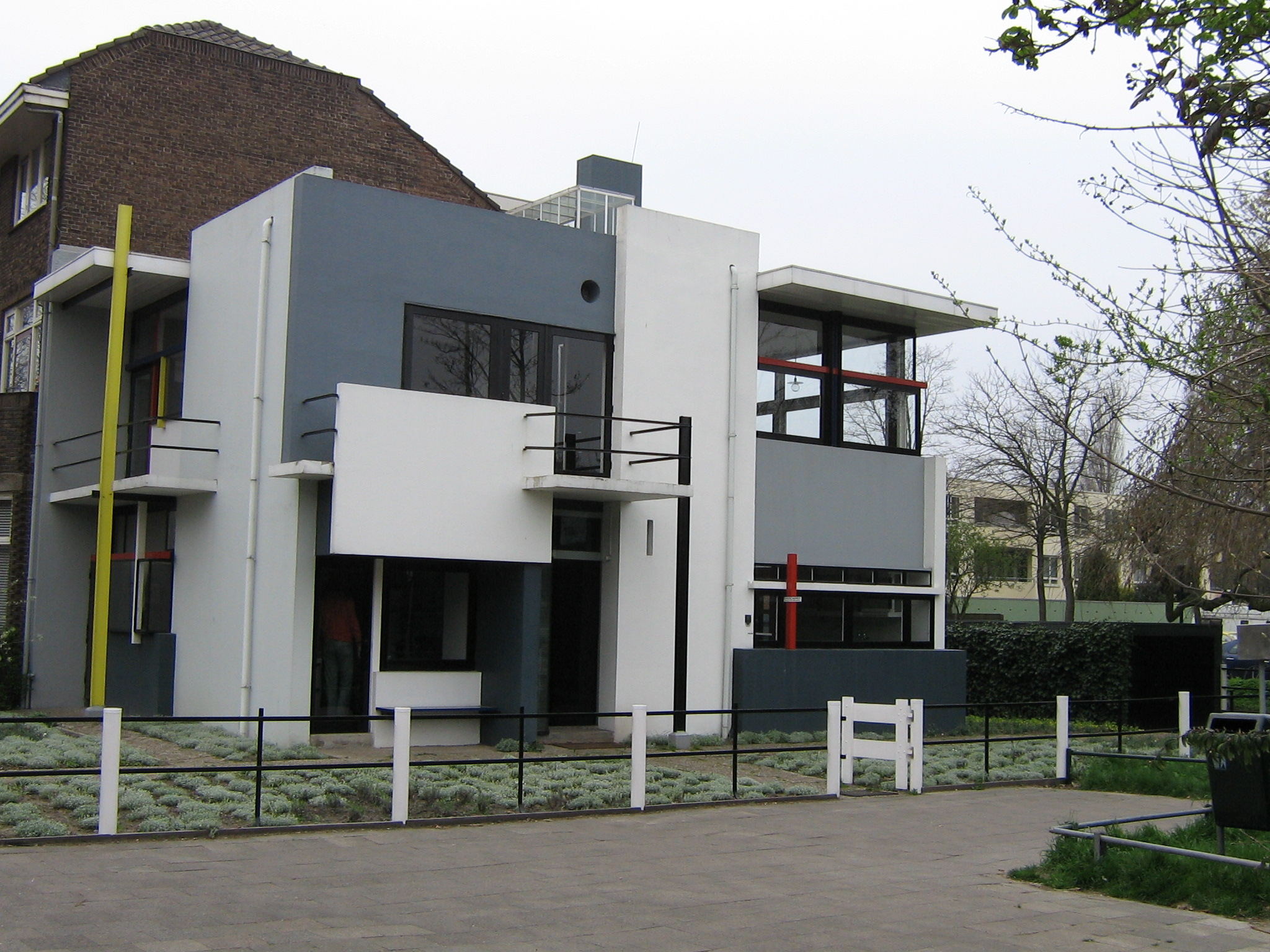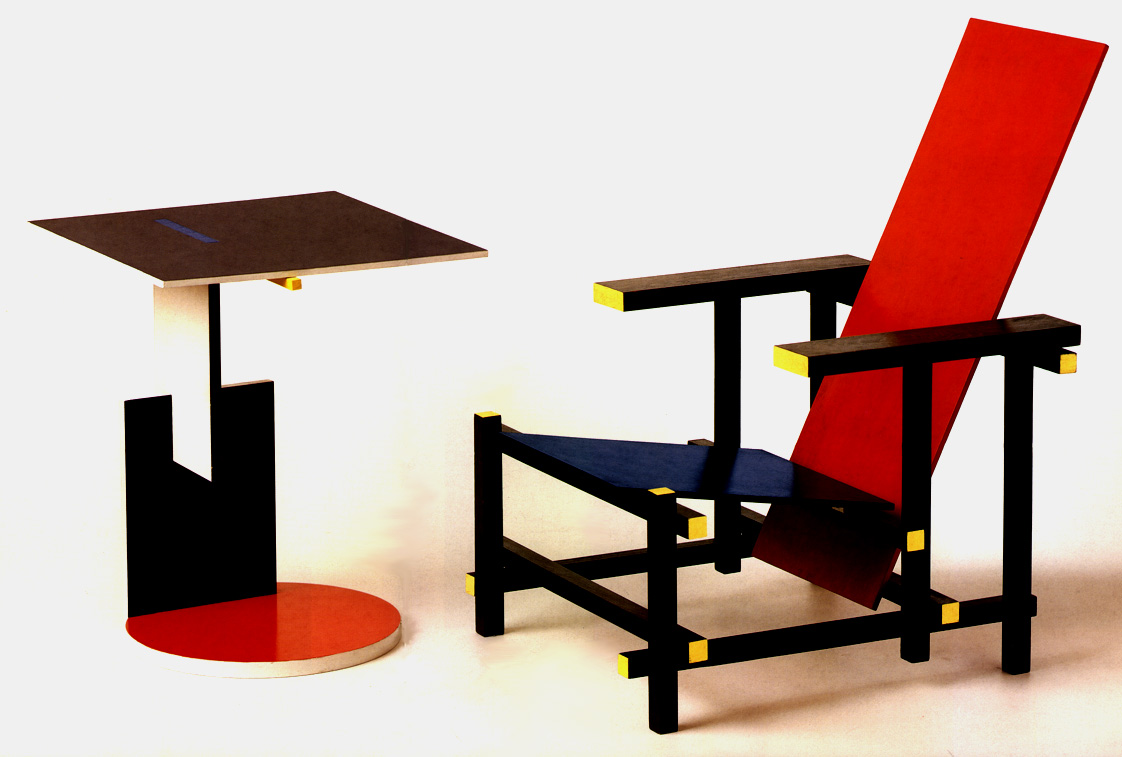Constructivism began in Russia after the revolution, in 1917 and lasted until the 1922. Many contemporary international constructivist designers made paintings and sculptures, dating back to 1911. There was an influence from the modern European styles such as the Cubism and the Italian Futurism.
One of the prints that have appeared for the first time on the catalogue for the exhibition in 1922, stated that all artists should now 'go into the factory, where the real body of life is made', (Julier and Julier, 2005).
Constructivisim has heavily impacted the traditional art, however besides painting and sculpture, constructivism influenced architecture, poetry, theater and even the consumer market. At the second half of the 20th century Social Realism generated an artistic movement where it depicted social and racial injustice and the economic hard worship through pictures of life's struggles.
This is a Vladimir Tatlin's constructivist design. The geometry, diagonal and vertical lines shown in the model represent the Russian Constructivism. Practically the constuctivist design was a design proposal to be constructed in Moscow city, Russia. (Passportmagazine.ru, 2016)
The movement of De stijl, that means The Style, initiated in 1917. The style of this movement represents ultimate simplicity and abstraction, due to the reduction of work after world war 1, it was a way of how they wanted to express a Utopia idea of harmony and order . The associated artists within this movement are Theo Van Doesburg, Piet Mondrian along with the architect Gerrit Rietveld.
This is to show the influences taken from paintings of Piet Mondrian.
This is one building that was released completely according to the principles of De Stijl. Simple, use of primary colours along with black and white.
This was one of the first explorations of De stijl, by Gerrit Rietveld. In the picture there is a red and blue chair. One could see the simplicity in the constructed design of the chair, the solid painted colours and overall the geometric lines that are evidently shown with rectangular framing. Yet looking at the table that is beside the chair, it has its own particular abstraction, made with different geometric shapes and altered surfaces. All characteristics shown in this chair, were influenced and applied differently on other furniture and products.
There are lots of products that were and still are being influenced by the movement style of De stijl, such as the Modrian table by Bernard Vuarnesson has been influenced by Piet Mondrian and the principles of De Stijl itself. Again the strong black border line splits up the primary colours, that are shown: blue, red and yellow, along with a white colour.
Bauhaus is a school of art and design that opened in Weimar Germany in 1919, by Walter Gropius. The Bauhaus moved to Dessau then Berlin and finally it closed down by the Nazis in 1933. The definition of Bauhaus is Home Construction. It's where teachers had given lots of ideas and creativity to inspire students and let students free to experiment and do whatever they had in mind. Architects, sculptors and painters all were getting the manual labor of the craftsmanship. (En.wikiarquitectura.com, 2016) European Art academies have thought each design subject separately. The Bauhaus offered many training foundations in art and design disciplines, they believed in variety.
Gropius has put together the ambitions of the design process and unite art, techniques and aesthetics, continuing by developing new materials and technology without neglecting the legacy of the craftsmanship, gather all the ideas and create functionality.
With the contribution of what Walter Gropius altered in the legacy of teaching and the design processes that has put together in Bauhaus, has effected the world and from then until today, we still follow his way of how he divorced art and the industrial production on one side and the other between art and crafts. In Bauhaus they kept on developing new materials and technology without neglecting the legacy of craftsmanship.
Marcel Breuer is perhaps best known for the design of his famous tubular steel Wassily chair. The design of the chair which was inspired from the bicycle construction, might have been new at that time, because it stands on two bent u shaped design that is made out of tubular steel and fabric. At the time of Bauhaus such materials like: glass, bent wood, tubular steel or chrome plating and leather were new. So the approach of the public, when seeing such designs, were being astounded.
One of the prints that have appeared for the first time on the catalogue for the exhibition in 1922, stated that all artists should now 'go into the factory, where the real body of life is made', (Julier and Julier, 2005).
| Constructivism -Promotional poster, designed to promote Amo-Bek Nazarov's 1927 |
Constructivisim has heavily impacted the traditional art, however besides painting and sculpture, constructivism influenced architecture, poetry, theater and even the consumer market. At the second half of the 20th century Social Realism generated an artistic movement where it depicted social and racial injustice and the economic hard worship through pictures of life's struggles.
_(7622118328).jpg) |
| Socialist-Realist Sculpture in Vilnius |
| Vladimir Tatlin's Constructivist design for the monument to the third international |
The movement of De stijl, that means The Style, initiated in 1917. The style of this movement represents ultimate simplicity and abstraction, due to the reduction of work after world war 1, it was a way of how they wanted to express a Utopia idea of harmony and order . The associated artists within this movement are Theo Van Doesburg, Piet Mondrian along with the architect Gerrit Rietveld.
This is to show the influences taken from paintings of Piet Mondrian.
 |
| Tableau 1, oil on canvas, Piet Mondrian 1921 |
This is one building that was released completely according to the principles of De Stijl. Simple, use of primary colours along with black and white.
 |
| The Rietveld Schroder House, 1924 |
 |
| Red and Blue chair by Gerrit Rietveld, 1917 |
There are lots of products that were and still are being influenced by the movement style of De stijl, such as the Modrian table by Bernard Vuarnesson has been influenced by Piet Mondrian and the principles of De Stijl itself. Again the strong black border line splits up the primary colours, that are shown: blue, red and yellow, along with a white colour.
| Mondrian/ De Stijl influence, table by Bernard Vuarnesson, 2011 |
Bauhaus is a school of art and design that opened in Weimar Germany in 1919, by Walter Gropius. The Bauhaus moved to Dessau then Berlin and finally it closed down by the Nazis in 1933. The definition of Bauhaus is Home Construction. It's where teachers had given lots of ideas and creativity to inspire students and let students free to experiment and do whatever they had in mind. Architects, sculptors and painters all were getting the manual labor of the craftsmanship. (En.wikiarquitectura.com, 2016) European Art academies have thought each design subject separately. The Bauhaus offered many training foundations in art and design disciplines, they believed in variety.
 |
| Bauhaus School in Weimar, Germany 1919 |
With the contribution of what Walter Gropius altered in the legacy of teaching and the design processes that has put together in Bauhaus, has effected the world and from then until today, we still follow his way of how he divorced art and the industrial production on one side and the other between art and crafts. In Bauhaus they kept on developing new materials and technology without neglecting the legacy of craftsmanship.
Marcel Breuer is perhaps best known for the design of his famous tubular steel Wassily chair. The design of the chair which was inspired from the bicycle construction, might have been new at that time, because it stands on two bent u shaped design that is made out of tubular steel and fabric. At the time of Bauhaus such materials like: glass, bent wood, tubular steel or chrome plating and leather were new. So the approach of the public, when seeing such designs, were being astounded.
| Wassily Chair Model B3,by Marcel Breuer, 1925 |
Another tubular chrome chair with comfortable black leather seating.
I relate the bending technique, form and materials of the chrome cantilever tubular Bauhaus style chair with the contemporary Girdo cantilevered dining chair that was launched in 2016. Although the model chair that is shown down below in the picture is made out stainless steel, leather and round bent wood, the features of the chair reminds me of the above picture that was made at the time of the Bauhaus.
Clean plain surfaces, with simple modern luxurious form, leaving the wood grain shown, and the use of leather covers representing more softness and comfort in the material. The model itself since its a cantilever chair reminds me of the saying of form follows function.
| Chrome Cantilever tubular Bauhaus style chair |
Clean plain surfaces, with simple modern luxurious form, leaving the wood grain shown, and the use of leather covers representing more softness and comfort in the material. The model itself since its a cantilever chair reminds me of the saying of form follows function.
| Girado Cantilevered dining chair by Team7, 2016 |
Reference:
YouTube, 2016. Architecture in the Early 20th Century, Modernism, Bauhaus, DeStijl and International Style. [online] Available at: <https://www.youtube.com/watch?v=wUb1ficeiD8> [Accessed 27 May 2016]
Moma.org, 2016. MoMA | Inventing Abstraction. [online] Available at: <http://www.moma.org/interactives/exhibitions/2012/inventingabstraction/?work=226> [Accessed 27 May 2016]
Christies.com, 2014. Collecting Guide: 19th and 20th century posters. [online] Available at: <http://www.christies.com/features/Collecting_Posters-5054-1.aspx> [Accessed 27 May 2016].
Passportmagazine.ru.,2016. An American Architect in Moscow: Frank Williams. [online] Available at: <http://www.passportmagazine.ru/article/1311/> [Accessed 27 May 2016]
YouTube, 2016. What Is Social Realism?. [online] Available at: <https://www.youtube.com/watch?v=soJ2BKXqGKQ> [Accessed 27 May 2016]
Abicontextualstudies.blogspot.com.mt, 2016. Contextual Studies: Social Realism, Constructivism, Abstract Expressionism. [online] Available at: <http://abicontextualstudies.blogspot.com.mt/2013/01/social-realism-constructivism-abstract.html> [Accessed 27 May 2016]
Flask, D.,2016. De Stijl : Design Is History. [online] Designishistory.com. Available at: <http://www.designishistory.com/1920/de-stijl/> [Accessed 27 May 2016].
Tetraktysmag.com.,2016. Modrian table by Bernard Vuarnesson. TETRAKTYSMAG by Peris Christou & Angie Kazana. [online] Available at: <http://tetraktysmag.com/?p=1114> [Accessed 27 May 2016]
En.wikiarquitectura.com, 2016. Bauhaus building in Dessau - Architecture of the World - WikiArquitectura. [online] Available at: <https://en.wikiarquitectura.com/index.php/Bauhaus_building_in_Dessau> [Accessed 27 May 2016]
www.sienweb.com, L., 2016. Girado cantilevered dining chair. [online] Wharfside Furniture. Available at: <http://www.wharfside.co.uk/dining-furniture/detail/luxury-cantilever-dining-chair-girado> [Accessed 28 May 2016].
Janssen, H. and White, M., 2011. The story of De Stijl. New York: Abrams.
Julier, G and Julier, G. (2005). The Thames & Hudson dictionary of design since 1900. London:Thames & Hudson.
Moma.org, 2016. MoMA | Inventing Abstraction. [online] Available at: <http://www.moma.org/interactives/exhibitions/2012/inventingabstraction/?work=226> [Accessed 27 May 2016]
Christies.com, 2014. Collecting Guide: 19th and 20th century posters. [online] Available at: <http://www.christies.com/features/Collecting_Posters-5054-1.aspx> [Accessed 27 May 2016].
Passportmagazine.ru.,2016. An American Architect in Moscow: Frank Williams. [online] Available at: <http://www.passportmagazine.ru/article/1311/> [Accessed 27 May 2016]
YouTube, 2016. What Is Social Realism?. [online] Available at: <https://www.youtube.com/watch?v=soJ2BKXqGKQ> [Accessed 27 May 2016]
Abicontextualstudies.blogspot.com.mt, 2016. Contextual Studies: Social Realism, Constructivism, Abstract Expressionism. [online] Available at: <http://abicontextualstudies.blogspot.com.mt/2013/01/social-realism-constructivism-abstract.html> [Accessed 27 May 2016]
Flask, D.,2016. De Stijl : Design Is History. [online] Designishistory.com. Available at: <http://www.designishistory.com/1920/de-stijl/> [Accessed 27 May 2016].
Tetraktysmag.com.,2016. Modrian table by Bernard Vuarnesson. TETRAKTYSMAG by Peris Christou & Angie Kazana. [online] Available at: <http://tetraktysmag.com/?p=1114> [Accessed 27 May 2016]
En.wikiarquitectura.com, 2016. Bauhaus building in Dessau - Architecture of the World - WikiArquitectura. [online] Available at: <https://en.wikiarquitectura.com/index.php/Bauhaus_building_in_Dessau> [Accessed 27 May 2016]
www.sienweb.com, L., 2016. Girado cantilevered dining chair. [online] Wharfside Furniture. Available at: <http://www.wharfside.co.uk/dining-furniture/detail/luxury-cantilever-dining-chair-girado> [Accessed 28 May 2016].
Janssen, H. and White, M., 2011. The story of De Stijl. New York: Abrams.
Julier, G and Julier, G. (2005). The Thames & Hudson dictionary of design since 1900. London:Thames & Hudson.
No comments:
Post a Comment